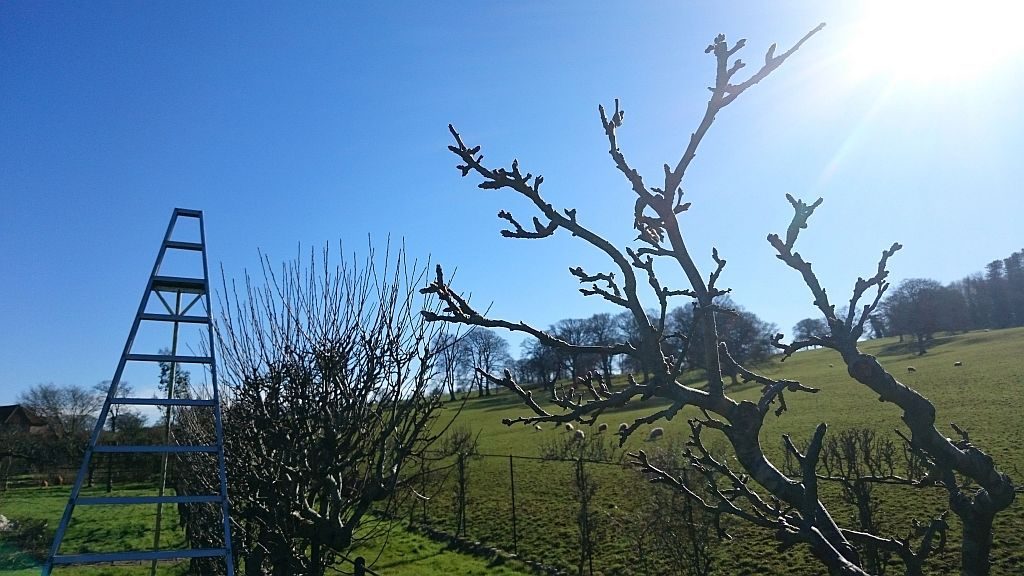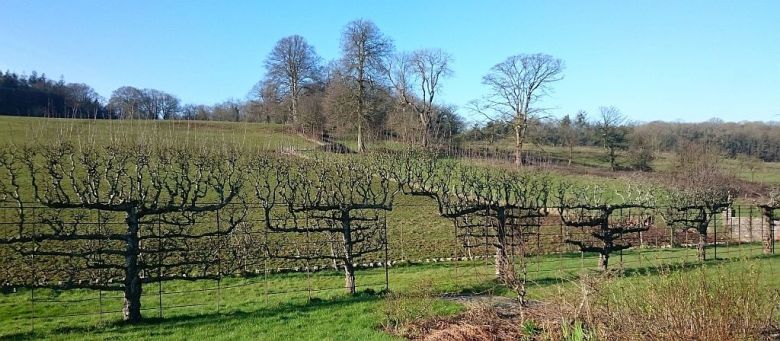Trained fruit trees, probably one of a gardeners favourite jobs. These old apple espaliers perfectly illustrate the techniques and pitfalls when maintaining trained fruit trees, whether espaliers, cordons or whatever shape takes your fancy. Planted in the late 1890’s these trained fruit trees at Barrow Court in North Somerest were once regarded as one of the finest collections of trained fruit in the south west. Over a century later, they are reaching the end of their life but a programme to conserve them as heritage varieties was undertaken by Gareth and his team at Edwards Garden Services whilst we were the contract gardeners at Barrow Court between 2011-18
As for the routine maintenance, channelling the fruit trees growth into the production of good quality fruit is the aim. Unrestricted, the espalier would happily shoot away with an abundance of vertical growth, as seen in these top-heavy espaliers here.
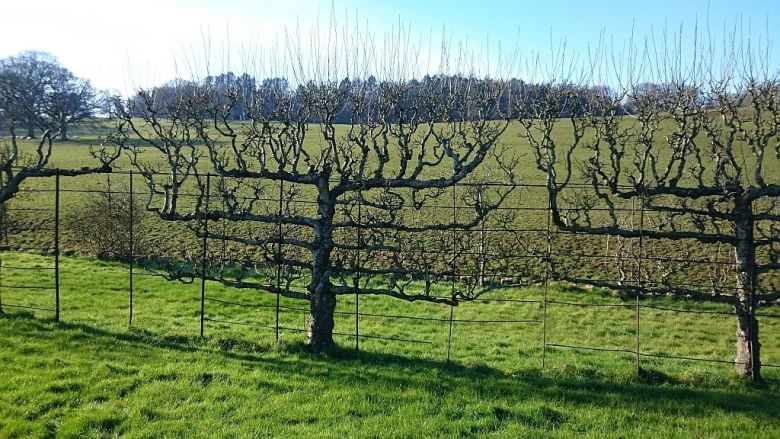
Summer for fruit, winter for growth. A helpful sound-bite for your annual pruning routine but the important trick is being able to distinguish fruit buds from growth buds (happily plump or narrowly focused and angular) and knowing how the twig will respond when you snip it. On younger trees, a late summer prune can be the more important seasonal prune, channeling growth into the development of the all important fruit buds. Here however, dealing with old trees, the winter prune is as important in balancing out the conjested branching system. It is important not prune too hard though, as this will just encourage a flush of fruitless new growth.
On apples, fruit is bourne most prolifically on 2-3 year old wood, with fruiting side branches (spurs) developing to bear the weight of the crop (unless you have a tip-bearer, but that’s another story).
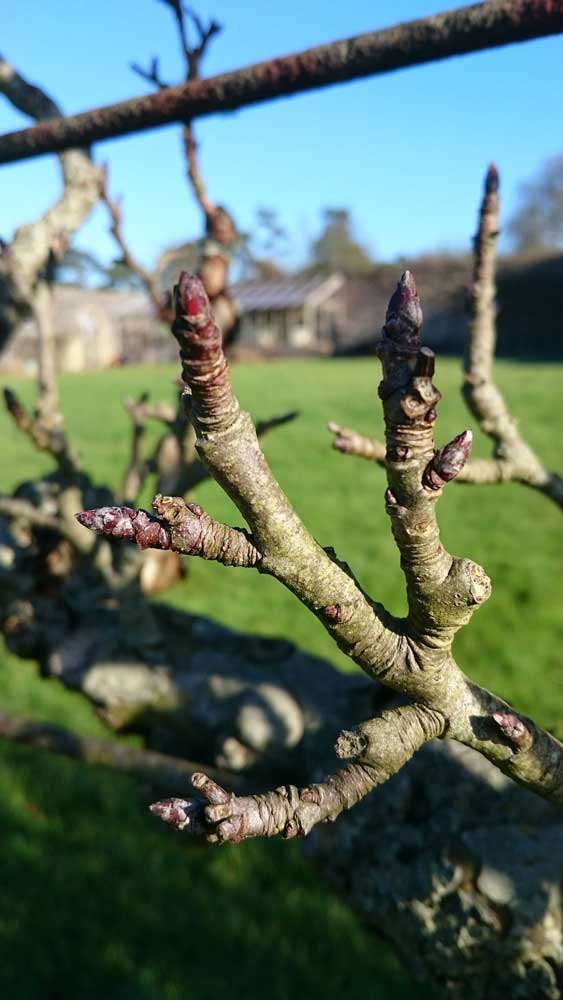
Older wood becomes fruitless but structural, supporting the good arrangement of flowering wood; the youngest wood is enthusiastic but bears little fruit.
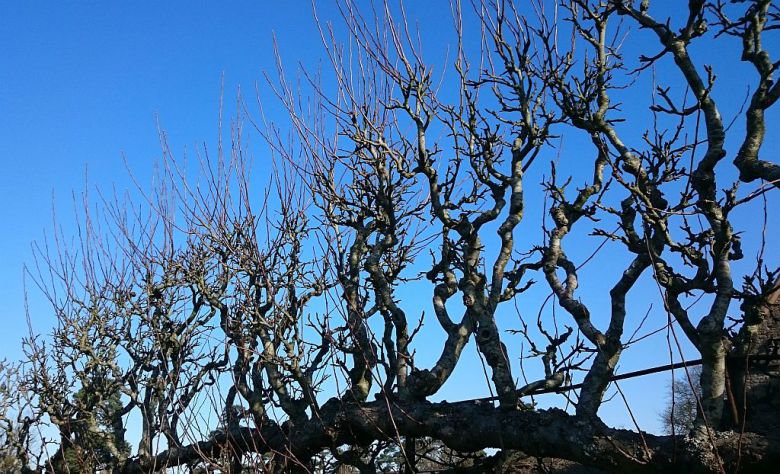
Over time, the spur system becomes congested, the over-crowding not allowing individual fruits the space and sunlight to grow and ripen well. The aim is to build up an open framework of fruiting side branches, maintaining a balance between growth, fruit and structure. Also it helps to have a good orchard ladder.
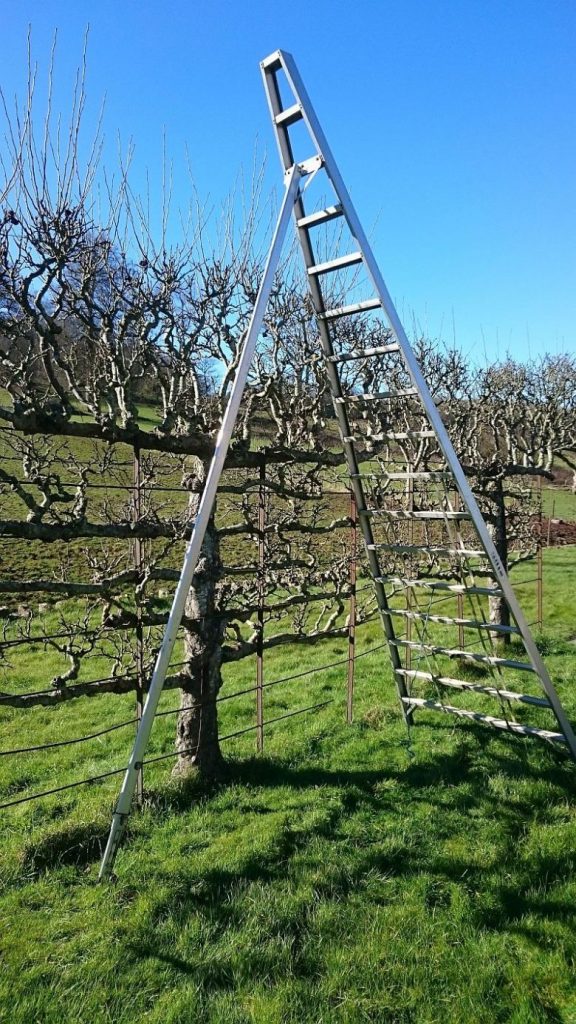
A pruned, thinned spur system. A more assertive approach could be used, encouraging the replacement of older unproductive branches with new fruitful ones, but these trees are getting on, so a programme of grafting onto new rootstocks is producing a new generation of replacements.
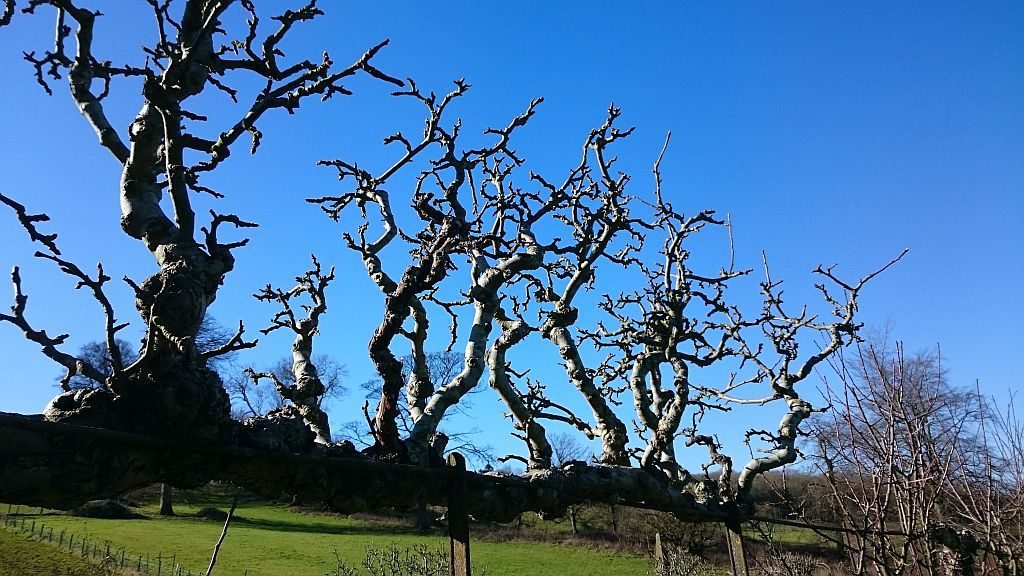
Not a bad job to have really.
